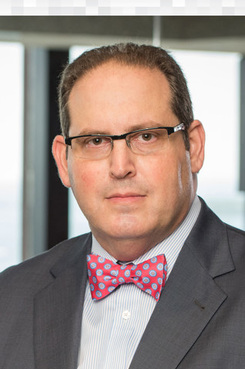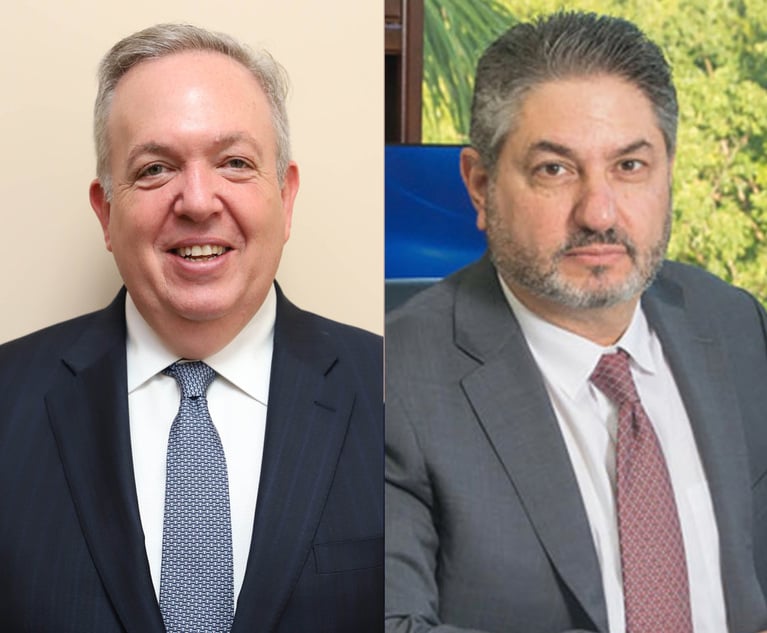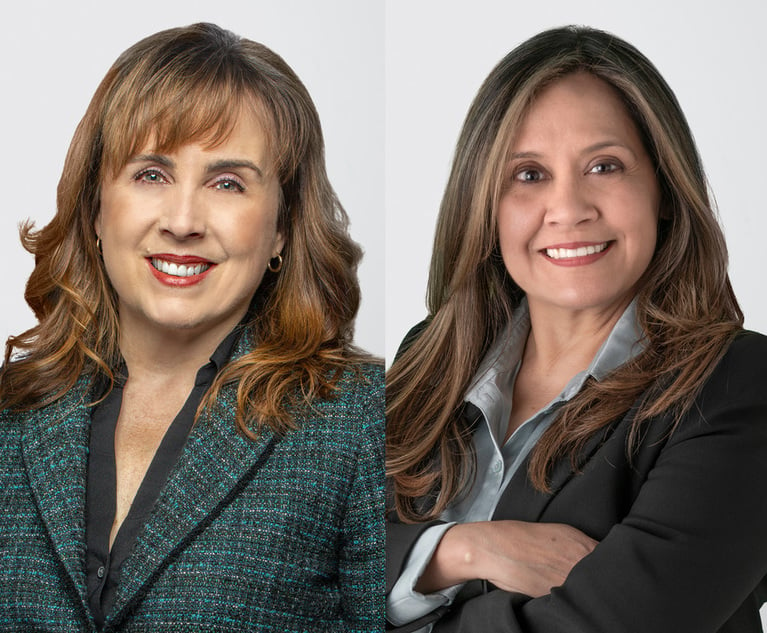Have We Seen the Limits of Fair Use?
After years of protracted litigation, including two jury trials and two appeals, Google and Oracle are now destined for yet another trial arising from Google's alleged unauthorized use of 37 of Oracle's Java application programming interfaces (APIs) in the Android smartphone operating system.
March 28, 2018 at 01:28 PM
5 minute read

After years of protracted litigation, including two jury trials and two appeals, Google and Oracle are now destined for yet another trial arising from Google's alleged unauthorized use of 37 of Oracle's Java application programming interfaces, or APIs, in the Android smartphone operating system. Finding that Google's use of Java APIs did not constitute fair use as a matter of law, on March 27, the U.S. Court of Appeals for the Federal Circuit reversed the trial court's judgment in favor of Google and remanded for a trial on damages.
While the decision ensures that the ongoing saga between Google and Oracle will no doubt continue to fascinate software developers who have been following the case with great interest, one of the most fascinating aspects of the case from an intellectual property law standpoint is that the case may come to represent a shift in the way that courts approach copyright fair use cases.
The proliferation of content on the internet has brought with it a number of common misconceptions regarding fair use. Setting aside those misconceptions, fair use is fundamentally a statutorily recognized defense to be asserted in response to a claim of infringement. As codified, fair use involves consideration of four factors to assess whether a particular use is a fair use: “the purpose or character of the use, including whether such use is of a commercial nature or is for nonprofit educational purposes; (2) the nature of the copyrighted work; the amount and substantiality of the portion used in relation to the copyrighted work as a whole; and the effect of the use upon the potential market for or the value of the copyrighted work.”
For better or worse, fair use as codified often raises more questions than it answers. Indeed, the U.S. Supreme Court has cautioned that fair use calls for a case-by-case analysis and “is not to be simplified with bright-line rules.”
Over the last 25 years or so, courts have produced a variety of decisions that expanded the application of fair use.
In the '90s, a copyright infringement suit involving the rap music group 2 Live Crew and the owner of the rights to Roy Orbison's popular song, “Oh, Pretty Woman,” resulted in a Supreme Court decision that parody — which the rap version of the song was considered — can support a finding of fair use. In reaching its decision, the Supreme Court considered the origins of fair use and observed that “in literature, in science and in art, there are, and can be, few, if any, things which in an abstract sense, are strictly new and original throughout.”
Fast forward to the last ten years, during which time courts continued to expand the scope of fair use recognized by the Supreme Court in the “Oh, Pretty Woman” case.
When photographer Patrick Cariou sued appropriation artist Richard Prince for copyright infringement, the U.S. Court of Appeals for the Second Circuit held that Prince's artwork did not need to comment on Cariou's original works or the author of those works to constitute fair use.
Similarly, when artist Dereck Selzter sued the band Green Day for using a modified version of one of Seltzer's drawings, the U.S. Court of Appeals for the Ninth Circuit found that the band's use of the artwork in a music video was transformative in nature and hence fair use. In reaching its decision, the Ninth Circuit found that “with the spray-painted cross applied to the face of Seltzer's artwork, in the context of a song about the hypocrisy of religion, surrounded by religious iconography, [Green Day's] video backdrop using Seltzer's artwork conveys 'new information, new aesthetics, new insights and understandings' that are plainly distinct from those of the original artwork.”
While each of these decisions, in one way or another, broadened the scope of what constitutes fair use, the Federal Circuit's opinion in the Google/Oracle case represents what may ultimately prove to be the limit of fair use. Quoting some of the same language from the “Oh, Pretty Woman” decision, the Federal Circuit, concluded that Google's use of the 37 APIs was “not fair as a matter of law.” However, the Federal Circuit was also careful to limit the possible impact of its decision, even stating expressly that it was not foreclosing the possibility that a fair use defense could potentially apply “in an action involving the copying of computer code.”
It is too early to tell whether the Federal Circuit's decision will set the stage for the Supreme Court to revisit the fair use doctrine. Since the decision is, in certain respects, at odds with the decisions from the Second and Ninth Circuit courts mentioned above, such a split would typically justify the Supreme Court's review. Time will tell whether the Federal Circuit's decision represents a true limitation on fair use.
This much, however, is certain: as courts have recognized, fair use is likely to continue to be “the most troublesome [doctrine] in the whole law of copyright,” and a distinct challenge for those practitioners who pursue or defend claims of copyright infringement.
Samuel Lewis is a member of Cozen O'Connor in Miami. He focuses his practice on intellectual property litigation and transactional matters. Contact him at [email protected].
This content has been archived. It is available through our partners, LexisNexis® and Bloomberg Law.
To view this content, please continue to their sites.
Not a Lexis Subscriber?
Subscribe Now
Not a Bloomberg Law Subscriber?
Subscribe Now
NOT FOR REPRINT
© 2025 ALM Global, LLC, All Rights Reserved. Request academic re-use from www.copyright.com. All other uses, submit a request to [email protected]. For more information visit Asset & Logo Licensing.
You Might Like
View All
SEC Whistleblower Program: What to Expect Under the Trump Administration
6 minute read
Turning the Shock of a January Marital Split Into Effective Strategies for Your Well-Being
5 minute read

Trending Issues in Florida Construction Law That Attorneys Need to Be Aware Of
6 minute readTrending Stories
- 1Conversation Catalyst: Transforming Professional Advancement Through Strategic Dialogue
- 2Trump Taps McKinsey CLO Pierre Gentin for Commerce Department GC
- 3Critical Mass With Law.com's Amanda Bronstad: 700+ Residents Near Ohio Derailment File New Suit, Is the FAA to Blame For Last Month's Air Disasters?
- 4Law Journal Column on Marital Residence Sales in Pending Divorces Puts 'Misplaced' Reliance on Two Cases
- 5A Message to the Community: Meeting the Moment in 2025
Who Got The Work
J. Brugh Lower of Gibbons has entered an appearance for industrial equipment supplier Devco Corporation in a pending trademark infringement lawsuit. The suit, accusing the defendant of selling knock-off Graco products, was filed Dec. 18 in New Jersey District Court by Rivkin Radler on behalf of Graco Inc. and Graco Minnesota. The case, assigned to U.S. District Judge Zahid N. Quraishi, is 3:24-cv-11294, Graco Inc. et al v. Devco Corporation.
Who Got The Work
Rebecca Maller-Stein and Kent A. Yalowitz of Arnold & Porter Kaye Scholer have entered their appearances for Hanaco Venture Capital and its executives, Lior Prosor and David Frankel, in a pending securities lawsuit. The action, filed on Dec. 24 in New York Southern District Court by Zell, Aron & Co. on behalf of Goldeneye Advisors, accuses the defendants of negligently and fraudulently managing the plaintiff's $1 million investment. The case, assigned to U.S. District Judge Vernon S. Broderick, is 1:24-cv-09918, Goldeneye Advisors, LLC v. Hanaco Venture Capital, Ltd. et al.
Who Got The Work
Attorneys from A&O Shearman has stepped in as defense counsel for Toronto-Dominion Bank and other defendants in a pending securities class action. The suit, filed Dec. 11 in New York Southern District Court by Bleichmar Fonti & Auld, accuses the defendants of concealing the bank's 'pervasive' deficiencies in regards to its compliance with the Bank Secrecy Act and the quality of its anti-money laundering controls. The case, assigned to U.S. District Judge Arun Subramanian, is 1:24-cv-09445, Gonzalez v. The Toronto-Dominion Bank et al.
Who Got The Work
Crown Castle International, a Pennsylvania company providing shared communications infrastructure, has turned to Luke D. Wolf of Gordon Rees Scully Mansukhani to fend off a pending breach-of-contract lawsuit. The court action, filed Nov. 25 in Michigan Eastern District Court by Hooper Hathaway PC on behalf of The Town Residences LLC, accuses Crown Castle of failing to transfer approximately $30,000 in utility payments from T-Mobile in breach of a roof-top lease and assignment agreement. The case, assigned to U.S. District Judge Susan K. Declercq, is 2:24-cv-13131, The Town Residences LLC v. T-Mobile US, Inc. et al.
Who Got The Work
Wilfred P. Coronato and Daniel M. Schwartz of McCarter & English have stepped in as defense counsel to Electrolux Home Products Inc. in a pending product liability lawsuit. The court action, filed Nov. 26 in New York Eastern District Court by Poulos Lopiccolo PC and Nagel Rice LLP on behalf of David Stern, alleges that the defendant's refrigerators’ drawers and shelving repeatedly break and fall apart within months after purchase. The case, assigned to U.S. District Judge Joan M. Azrack, is 2:24-cv-08204, Stern v. Electrolux Home Products, Inc.
Featured Firms
Law Offices of Gary Martin Hays & Associates, P.C.
(470) 294-1674
Law Offices of Mark E. Salomone
(857) 444-6468
Smith & Hassler
(713) 739-1250






